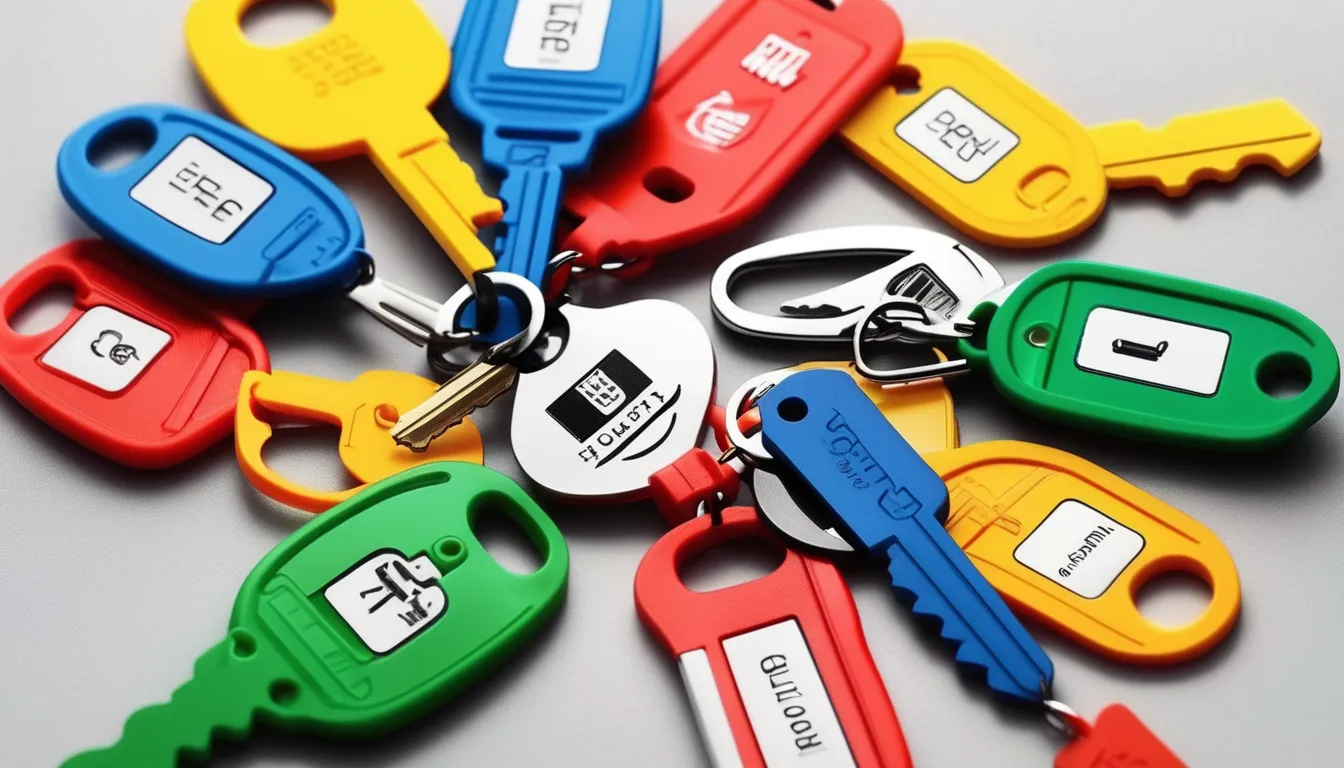Businesses, organizations, and individuals looking for long-lasting and useful identification solutions now depend heavily on custom plastic key tags. Choosing the appropriate personalized plastic key tags is essential whether you’re supervising a sizable fleet of cars, setting up storage units, or just attempting to simplify key administration in your establishment. This thorough article examines the essential elements to take into account when selecting these adaptable identification tools, ensuring you make an informed choice that will satisfy your unique requirements and offer lasting value.
1. Material Quality and Durability
The significance of a key tag is contained in its material, of which the reliability of any key tag is a requisite. The material that is used in developing high quality plastic key tags should be able to hold up to normal use, different kinds of weathers, and everyday abuse. Opt for tags made of high impact polystyrene, polyethylene, and polypropylene which are polymers of industrial standard. In the long run, these materials maintain the shape and clarity of information, and practically do not change visually or break when exposed to UV radiation, solvents, and physical shocks.
2. Size and Shape Considerations
Your key tags’ size and appearance have a significant impact on how well they work and how users interact with them. The perfect size should balance functionality and visibility; it should be big enough to hold the information that is required and easily visible, but small enough to not be bulky when kept in key management systems or fastened to keys. Take into account the amount of space in your storage options as well as how the tags will be used on a regular basis. Although standard forms like ovals and rectangles are frequently used, unique shapes may be more appropriate for certain applications or branding specifications.
3. Printing Method and Quality
The durability and appearance of your key tags are greatly influenced by the printing technique employed. Direct printing, thermal transfer, and embossing are common options. The longevity and visual appeal of each technique vary. While thermal transfer or embossing may be preferable for tags subjected to frequent handling or outdoor circumstances, direct printing may be appropriate for indoor use. Think about whether the printing must resist abrasion, chemicals, or sunshine.
4. Color Options and Visibility
Dark text on light backgrounds usually offers the best readability, while bright, fluorescent colors can enhance visibility in low-light conditions. Color is important for organization and fast identification. To ensure optimal readability, choose colors that provide a high contrast between the background and text. You may also want to consider implementing a color-coding system for different departments, locations, or purposes (though keep in mind that some colors may fade more quickly than others when exposed to UV light or harsh conditions).
5. Attachment Methods
For ease and security, the way your key tags fasten to keys or other objects is essential. Snap-hooks, slots, or holes for key rings are typical choices. The attachment technique must be robust enough to guard against unintentional separation while still making deliberate removal simple when required. Make sure the connection point is suitably reinforced to avoid tearing or breaking under typical use, and take into account the size and kind of key rings or attachment hardware you’ll be employing. To keep the tag from getting in the way of using or storing the key, the attachment point’s location should also be taken into account.
6.Customization Options
Think about how much personalization your key tags will need. This covers elements like barcodes, QR codes, sequential numbering, and certain text formatting. The customisation has to be in line with your operating needs and tracking system. Make sure the supplier can maintain clarity and a polished appearance while meeting your particular requirements for text sizes,custom logo luggage tags, and other design components. Keep in mind that more intricate customization may impact production expenses and duration. To get the most out of the tag, think about if you require double-sided printing or particular information layouts.
7. Environmental Resistance
When choosing the right specs, it is essential to comprehend the environment in which your key tags will be utilized. Compared to tags used in controlled indoor conditions, tags used outdoors or in industrial settings must be more resistant to environmental variables. Think about exposure to UV rays, extremes in temperature, humidity, and chemical interaction. To improve longevity, certain applications could call for unique coatings or treatments. Consider whether the tags must be chemical-resistant, waterproof, or able to tolerate high temperatures without breaking or becoming brittle.
Conclusion
A number of variables need to be carefully considered when choosing custom plastic key tags or custom teddy bears to make sure they will fulfill your demands and provide long-term value. Prioritize factors such as material quality, suitable sizing, printing longevity, color functioning, safe attaching techniques, personalization choices, and resistance to the environment. Before deciding, take some time to consider your unique needs and usage environment.

